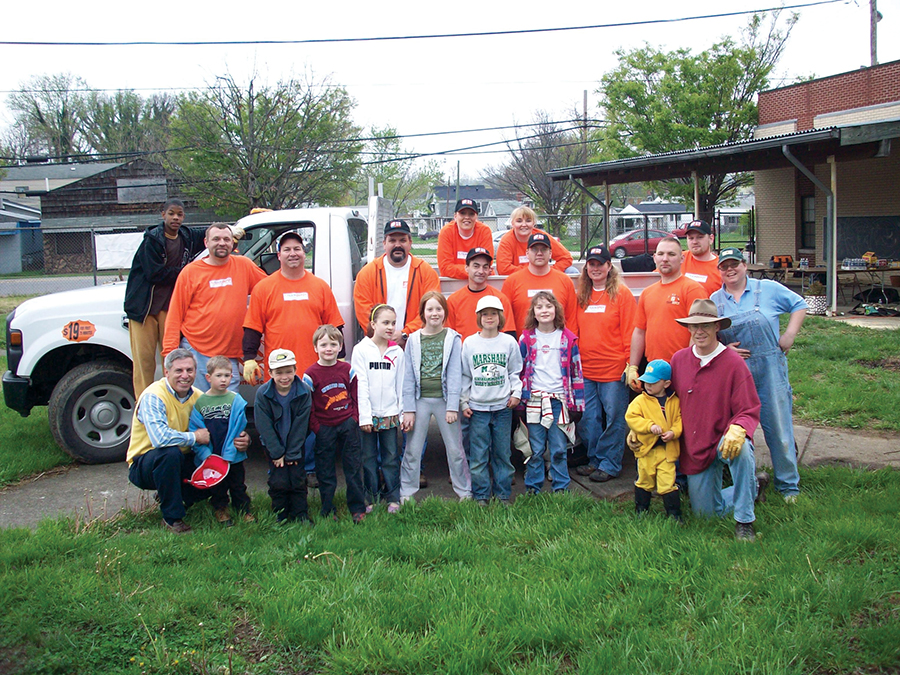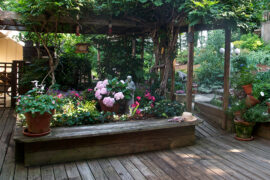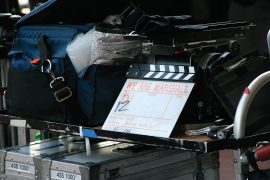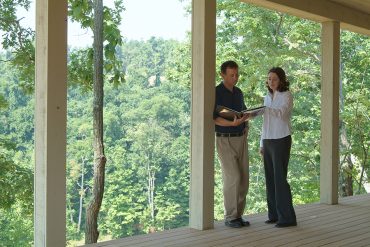A group in search of the key to Huntington’s revitalization.
By Carter Seaton
HQ 68 | SUMMER/AUTUMN 2009
“Somebody should do something about that!” has been the battle cry in Huntington for many years. The city government’s ability to address litter, crime, street signage and other issues has decreased as its population – and therefore its tax base – has declined. But a few years ago a determined group of citizens decided that it was time to stop looking to outside saviors and to do something themselves. After all, they said, “We are somebody.” And they are. They are Create Huntington.
In late 2006 this small group of people – including Ostie Mathisen, vice president of First State Bank in Barboursville, Anne Durham, president of Mountainside Media, Brandi Jacobs-Jones, Huntington’s director of administration and finance, former Mayor David Felinton and others – began meeting over lunch to discuss ways to help the city. Felinton had become fascinated with the idea of a so-called “creative economy,” so the group followed his lead and became educated on the subject.

Creative communities are usually characterized by industry segments that produce and market intellectual property; they are enabled by Internet commerce and have a global perspective. The members of the group found the idea enlightening. According to Ostie Mathisen, they suddenly understood that this new approach to economic development – empowering the citizens rather than relying on old leadership models – could be the ticket to Huntington’s revitalization.
Traditional thinking sought to attract new companies to Huntington, but Create Huntington shifted the focus to attracting new people, creative people, to the city. Once it did, the group realized that a creative economy is an almost fail-proof economy.
“If it can be structured into a flow chart, if it can be machine-operated, it is going to be shipped off and done more cheaply somewhere else,” said Anne Durham. “So what’s left? What is between our ears. Our creativity and our ingenuity. All of our thinking. That can never be outsourced.”
According to literature and research on creative communities, Huntington already has nearly all the elements needed to attract these creative folks: a university, an excellent health care system, historic architecture, an ideal location, a family-friendly environment, a good park system, museums, performing arts venues and an easy commute to work. Research shows that companies will come where creative people live. The team started looking at what needed to be addressed in order to complete the package.
They quickly recognized the challenges. Trash was a major issue, crime was on the rise, people didn’t know where Huntington was and empty storefronts faced many of the city’s streets. Much of the citizenry expressed despair. Then, Warner Brothers announced the Huntington filming of “We Are Marshall,” and the city began to spiff up. Groups and organizations tackled issues like trash receptacles, litter in the streets, weeds and empty flowerpots. And when the movie cast and crew said how much they loved Huntington, Durham said, it was a huge confidence-booster. When the team saw what was happening, they realized some mechanism had to be created to ensure ongoing success for these citizen efforts. That’s when Create Huntington was branded.
Around the same time, Mayor Felinton and Marshall University President Stephen Kopp asked a number of people to serve on one of five focus groups – Arts and Culture, Tourism, Technology, Business and Family Life – to help determine a vision for Huntington. During a community forum on Marshall’s campus in November 2006, citizens were asked for their input and to say whether or not this was the direction they wanted for the city. The final report formed the basis for a grant request to the Claude Worthington Benedum Foundation.
In December 2007, the City of Huntington was awarded $50,000 to develop a comprehensive plan, to formalize a structure for Create Huntington and to develop a way for citizens to become engaged. Create Huntington then hired a consultant, Collective Impact, to come facilitate meetings in the community, to ask more questions and to help create an action plan out of what they learned.
While the concept of a creative community is easy to explain, Create Huntington is a bit more amorphous. Anne Durham calls it a network or, better yet, a movement. Yes, it’s an organization, but not a traditional one. To obtain nonprofit status, something the group desires, the organization must have a board of directors. Because the Create Huntington board’s role is not to direct, but to connect people and resources, it is called a Board of Connectors.
Create Huntington uses the unusual analogy of a fruit tree to describe its structure. In a fruit tree, all of the energy in the trunk – the core – extends into the outermost parts – the branches, leaves and fruit. For Create Huntington, these are the community groups, volunteers and project teams. Those who currently form the core will eventually flow out to work on projects, and those now working on projects will flow back in and become involved in the mechanics. The intent is to allow broad participation, a continuous flow of ideas and a vast network of connected people who are not restricted or intimidated by anybody.
Thomas and Stacy McChesney were intrigued by the concept at that 2006 campus meeting and soon became members of the Board of Connectors. But last August, the couple really got involved. Several times, they had discussed whether to stay in Huntington or move. Each discussion included a list of downsides to living in a city with more amenities: longer commutes, higher housing costs and more crime.
“Here we have a five-minute commute, we have a lovely little home and we have great friends. There’s so much here that you just can’t buy elsewhere,” said Thomas. The McChesneys believed that Create Huntington could be an opportunity to help create the quality of life they wanted and still remain here.

Then Thomas heard a speaker who had developed a list of the characteristics of “cool small towns,” and he was puzzled. Huntington had almost all of them. It made Thomas wonder, if we have all of these “cool” elements, why do we see ourselves in such a negative light? The McChesneys heard the list again at the 2008 Create WV Conference. They realized that while some of the elements Huntington lacked were out of their control – lots of ethnic restaurants and international air access, for instance – they could help create what’s known as a “third place,” a place other than home or work where people congregate to engage others like themselves. With the help of Mark and Izzy Cross of 21 at the Frederick, the old hotel lobby became the living room for the Chat ‘n’ Chew – a place for folks to gather and brainstorm about their ideas for improving Huntington. They invited 10-15 friends, and it began to snowball. Now, on any given Thursday, 25-40 folks are buzzing away, creating excitement in a town where apathy once reigned.
Is it working? According to Thomas, “we are seeing progress on the path.” There are 30-50 ongoing projects, and success stories abound. The Fourth Avenue corridor project is nearly complete, and an art gallery named Gallery 842 opened last April to a full house. Huntington hosted the first WV 5K Championship race in June, and a dog park will soon open. Community gardens have sprung up in Fairfield East, and the Trees for Tomorrow Team is planting 1,000 trees around town. The Huntington Area Revitalization Coalition has planted flower gardens at Harris Riverfront Park, around the Memorial Statue on Veterans Parkway and in planters across Huntington.
But, according to several of the Connectors, the most important change is in the attitude, the spirit of the citizens. Tyson Compton, president of the Cabell-Huntington Convention and Visitors Bureau, said he has felt that change. He’d lived in neighboring Ashland, Ky., for the last 14 years and had read about Create Huntington in The Herald-Dispatch. He said it was one of the big reasons he applied for his current position.

“I kind of felt like the kid on the outside looking in,” he said. “I wanted to be part of that excitement.” Two years after Vaughn Grisham, director of the McLean Institute for Community Develop-ment at the University of Mississippi, first worked with that early core group, he continues to point to Huntington as a good example of progress.
What does the future hold for the city and for Create Huntington? Who knows? But, as Anne Durham said, “when you see someone walking their dog with a litter stick or working on a community flowerbed, that’s awesome. It says, ‘I love this community and I love the people enough to take time to take care of this.'”
The sky is now the limit, because “somebody” is doing something.





